Professor Yarin receives two Springer Nature Editor of distinction awards

Richard and Loan Hill Professor and UIC Distinguished Professor Alexander Yarin has been selected as a recipient of two 2025 Springer Nature Editor of Distinction Awards, which recognize exceptional editors for their contributions to the peer review process and author experience. The awards highlight dedication to upholding scientific accuracy and advancing discovery.
Yarin received the Springer Nature Editorial Contribution Award, which recognizes his meticulous assessment of submissions and rigorous management of the peer review process, safeguarding the scientific accuracy of the published articles.
He also received the Springer Nature Author Service Award for his exceptional service in improving the author experience and ensuring the peer review process is efficient, constructive, and fair.
“I am honored to receive these awards,” said Yarin, associate editor of the journal Experiments in Fluids. “Journals are vital for the advancement of research and shaping academia. It is our responsibility to ensure these platforms are rigorously reviewed to ensure quality and for the integrity of the scientific community.”
Springer Nature is the publisher of influential journals and a pioneer in open research. Its portfolio of journals covers a full range of research disciplines – providing a home for sound research contributions and a platform for some of the most important discoveries.
Experiments in Fluids examines the advancement, extension, and improvement of new techniques of flow-related measurement. The journal also publishes contributions that employ existing experimental techniques to advance understanding of the underlying flow physics in turbulence, aerodynamics, hydrodynamics, convective heat transfer, combustion, turbomachinery, multi-phase flows, and chemical, biological, and geological flows. Although the journal publishes articles that combine experimental and analytical/numerical approaches, the dominant component of the investigation must be experimental.
Smart packaging changes color to warn that the fish has gone bad
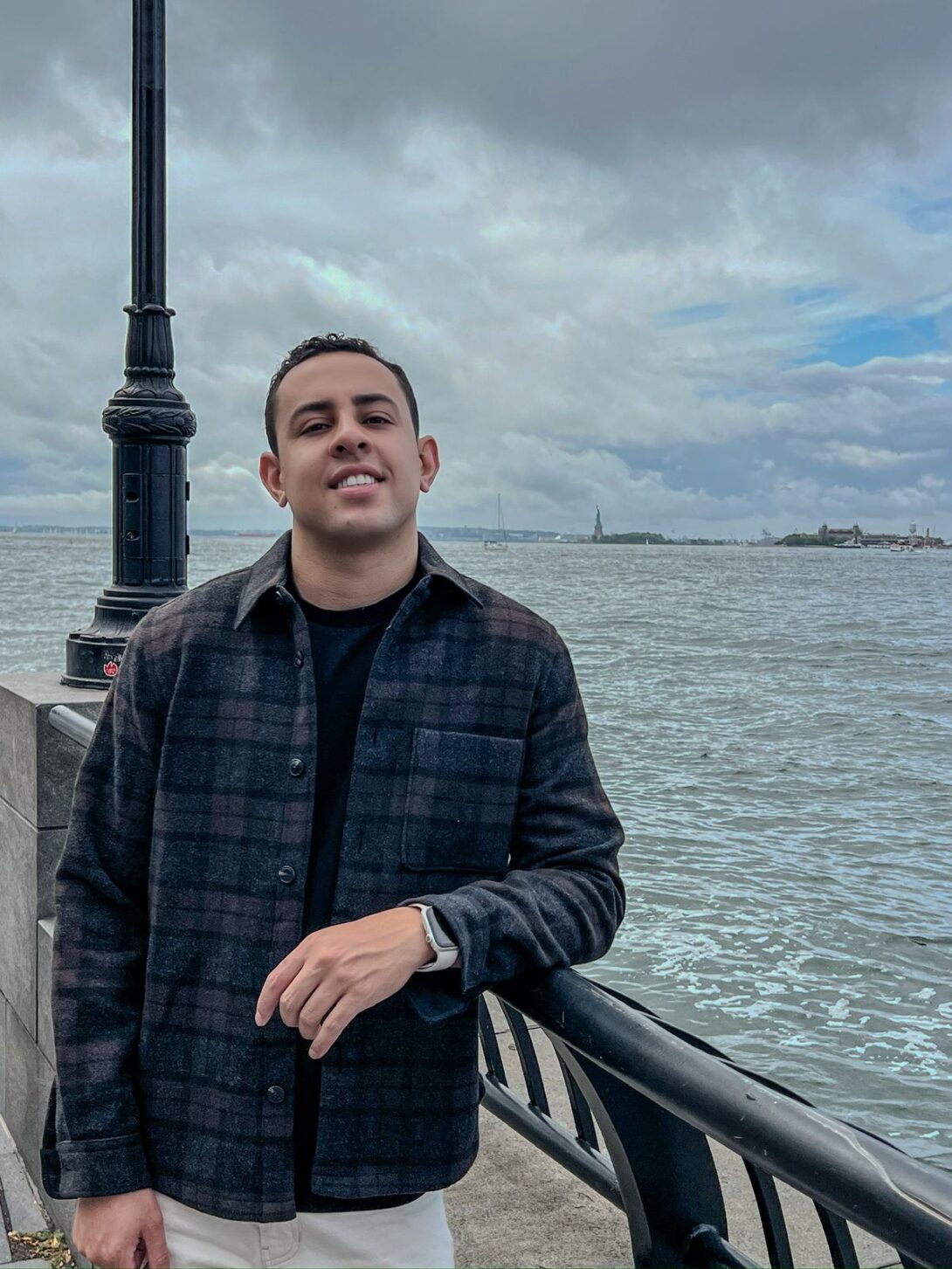
Read here about this research:
https://cerradoruralagronegocios.com.br/Publicacao.aspx?id=588716
https://jornalcampoaberto.com/embalagem-inteligente-muda-de-cor-para-avisar-que-o-peixe-estragou/
https://folhanoroeste.blogspot.com/2025/05/embalagem-inteligente-muda-de-cor-para.html
https://vidaruralmt.com.br/Publicacao.aspx?id=588860
https://opresenterural.com.br/embalagem-inteligente-muda-de-cor-para-avisar-que-peixe-estragou/
https://diariodocomercio.com.br/itatiaia/almg-simoes-leva-primeiro-escalao-zema-apresentar-propag/
https://opresenterural.com.br/precos-da-tilapia-sobem-em-abril-mas-oferta-elevada-limita-aumento/
https://conexaosafra.com/geral/conheca-a-embalagem-que-muda-de-cor-quando-o-peixe-estraga/
https://souagro.net/noticia/2025/05/embalagens-mudam-de-cor-para-avisar-que-o-peixe-estragou/
https://juniortakamoto.com.br/embalagem-inteligente-muda-de-cor-para-avisar-que-peixe-estragou-veja/
https://namidia.fapesp.br/embalagem-inteligente-muda-de-cor-para-avisar-que-o-peixe-estragou/608595
https://namidia.fapesp.br/embalagem-inteligente-muda-de-cor-para-avisar-que-o-peixe-estragou/608596
https://namidia.fapesp.br/embalagem-inteligente-muda-de-cor-para-avisar-que-o-peixe-estragou/608597
https://foodbizbrasil.com/tecnologia/embalagem-inteligente-monitoramento-alimentos/
https://www.grandesantarosanoticias.com/site/index.php?r=noticias/ver&id=87536
The Richard and Loan Hill Professorship of Engineering
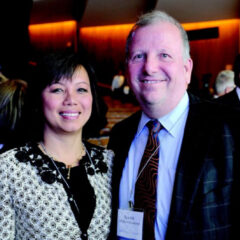
Dean Pete Nelson is delighted to announce that three faculty members have received the Richard and Loan Hill Professorship of Engineering this fall, including Professor Natasha Devroye of the Electrical and Computer Engineering Department, Professor James Patton of the Biomedical Engineering Department, and Distinguished Professor Alexander Yarin from the Mechanical and Industrial Engineering Department.
Richard and his wife, Loan Hill, have been generous supporters of the UIC Colleges of Engineering and Medicine for years, giving the University $10 million. Rick is a 1974 UIC bioengineering graduate and a 1981 MBA graduate from Syracuse. In 2008, Rick was the first recipient of an honorary UIC Doctorate of Engineering degree.
Formerly Chairman and CEO of Novellus Systems—a leader in the design and manufacture of semiconductor equipment used to fabricate integrated circuits that was sold to Lam Research for $3.3 billion in 2012—Rick has deep experience in all aspects of the semiconductor industry, as well as in corporate governance. Before joining Novellus in 1993, Rick Hill spent 12 years in senior leadership roles at Tektronix. Before Tektronix, he held a range of engineering and management positions with General Electric, Motorola, and Hughes Aircraft.
He has served as Chairman of the Board for Marvell Technology and has previously served on the board of directors of Novellus Systems, Cabot Corporation, Arrow Electronics, LSI Corporation, Yahoo, Autodesk, Planar Systems, LTX Corporation, Symantec, and Xperi. As testimony to the influence Rick Hill has had as a board director, he has served as interim CEO at Marvell, Xperi, and, most recently, Symantec. He was previously the chairman of the UIC Engineering Advisory Board and chairman of the University of Illinois Foundation.
Loan Hill is a Vietnamese refugee. In April of 1975, Loan Tran was airlifted from Tan Son Nhut Airbase in Saigon under harrowing circumstances with five of her siblings and a young niece and nephew. She said goodbye to her parents with only the belongings she could fit in a pillowcase. When she arrived in the Philippines, she was given up for adoption by her older sister, who had two children of her own to care for and feed. Loan moved from one refugee camp to another until she reached Fort Chaffee, Arkansas. By the time she reached that refugee camp, the adoption papers were finalized, and she was separated from her remaining family, once again, along with her younger sister, to Riverside, California. With no information about her parents and the remaining four siblings, it was one more hardship to overcome with an uncertain future.
After six months with her new adoptive family, the phone rang, and the adoptive mother told Loan her father was on the phone and wanted to talk with her. She thought it was her adoptive father, but to her shock, it was her father who had escaped from Vietnam with the other members of the family. The first words out of her mouth were, “Do you know what your daughter did to me?” This is an example of the resilient personality that has enabled Loan’s success professionally as well as personally.
Loan rejoined her family in Kansas City before the family moved to San Jose, where Loan would finish grade school and high school and her degree in computer science from San Jose State University. Loan’s intensity in her profession is no less than it was in surviving her personal trials. She has worked for several high-tech start-ups where she succeeded and eventually landed at Novellus Systems in 1990, where she rose to be CEO.
Loan returned to Vietnam in 2005 where she opened an office in Vietnam that was managed and operated mostly by women. She would give presentations to gender-segregated management and employees at Vietnamese companies and tell the women that “they needed to be independent and stand on their own two feet” and that “these guys should be working for you!” Loan continues to stay in touch with over 20 women she has mentored, including the daughter of the head of the communist party.
Loan today is spending most of her time today working with Rick in a poor area of Panama on the Caribbean Coast. She is remodeling a boutique hotel while once again mentoring and encouraging women that they can do more. In the last few months, Loan and Rick have initiated partnership discussions with the UIC to have UIC student organizations and faculty work on service projects that will advance the quality of life for the local population and increase the understanding our students have of the world around them.

Professor Natasha Devroye
Dr. Natasha Devroye is a professor in the Department of Electrical and Computer Engineering at the University of Illinois Chicago (UIC), which she joined in January 2009. From 2007-2008, she was a lecturer at Harvard University, where she also obtained her PhD in engineering sciences in 2007.
She has been an associate editor for IEEE Transactions on Wireless Communications, the IEEE Journal of Selected Areas in Communications, the IEEE Transactions on Cognitive Communications and Networking, the IEEE Journal on Selected Areas in Information Theory, and the IEEE Transactions on Information Theory. She co-chaired the Women in Information Theory Society from 2015-2018, was an Information Theory Society Distinguished Lecturer for 2019-2021, is an IEEE Information Theory Society Board of Governors member (2021-2026), and was elevated to IEEE Fellow in 2023.
At UIC, she was named a Researcher of the Year in the “Rising Star’’ in 2012 and a University Scholar in 2023. She is a co-PI of the Chicagoland area multi-institution NSF-funded Institute for Data, Econometrics, Algorithms, and Learning (IDEAL Institute). Her research focuses on multi-user information theory, spectrum sharing, wireless communications, and applications of information theory including, statistical analysis of hardware security primitives and interpreting learned error-correcting codes.
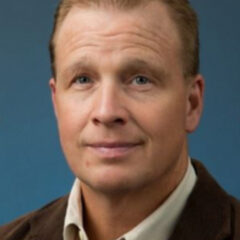
Professor James Patton
Dr. James L. Patton received his BS in mechanical engineering and engineering science from the University of Michigan (1989), MS in theoretical mechanics from Michigan State (1993), and PhD in biomedical engineering from Northwestern University (1998). He is a professor of bioengineering at the University of Illinois Chicago and a research scientist at the Shirley Ryan AbilityLab.
Dr. Patton’s groundbreaking research to improve rehabilitation strategies has been cited by his peers in the technical literature more than 8,000 times, with an H-index of 43. He has also garnered prestigious NIH and NIDDR grants to support his research over many years at both UIC and Shirley Ryan.
He worked in automotive manufacturing and nuclear medicine before discovering control of human movement. His interests include robotic teaching, controls, haptics, modeling, human-machine interfaces, and technology-facilitated recovery from a brain injury. Dr. Patton is vice president of conferences for the IEEE-EMB society, and Associate Editor of IEEE Transactions on Biomedical Engineering, and IEEE Transactions Medical Robotics and Bionics

Distinguished Professor Alexander Yarin
Dr. Alexander Yarin earned his MSc-1977 in Applied Physics, his PhD in Physics and Mathematics in1980, and his DSc in Habilitation in Physics and Mathematics in1989. His affiliations include The Institute for Problems in Mechanics of the Academy of Sciences of the USSR, Moscow (1977-1990); Professor at The Technion-Israel Institute of Technology (1990-2006; Eduard Pestel Chair Professor in Mechanical Engineering at The Technion in 1999-2006); Professor and Distinguished Professor at The University of Illinois Chicago, USA (2006-present); Fellow of the American Physical Society.
Dr. Yarin is the author of 6 books, 12 book chapters, 469 research papers, and 12 patents. He was a Fellow of the Rashi Foundation and the Israel Academy of Sciences and Humanities. He was awarded The Gutwirth Award, The Hershel Rich Prize, and The Prize for Technological Development for Defense against Terror of the American-Technion Society. He is one of the three co-editors of the ‘Springer Handbook of Experimental Fluid Mechanics,’ 2007, the Associate Editor of the journal “Experiments in Fluids,” and a member of the Editorial Advisory Board of the journals ‘Physics of Fluids, the Bulletin of the Polish Academy of Sciences, and ‘Archives of Mechanics.’
Dr. Yarin works in hydrodynamics, solid mechanics, electrohydrodynamics, polymer science, rheology, nanotechnology, and combustion. His main contributions are related to the hydrodynamics of free liquids jets, films, and drops, electrospinning and solution blowing of polymer nanofibers, and devices based on them. One of his inventions was licensed to the company Ivoclar and is currently marketed in Europe and the United States as a product VivaDent Aerosol Reduction Gel used in dentistry.
UIC engineers’ invention improves dental safety
UIC Distinguished Professor Alexander Yarin and a team of researchers at UIC invented a product that revolutionized the dental industry and made it safer.
Dentistry was one of many fields impacted during the global COVID-19 pandemic. Dentists had to navigate how to treat their patients while maintaining safe working environments for everyone in their offices.
Dentists frequently use ultrasonic scaling tools known as Cavitrons, which use vibrations and water to clean teeth. The tool produces a sound wave that creates vibrations in its tip and also releases water adjacent to the tooth to create cavitating bubbles, which loosen plaque and tartar from teeth. The water flow simultaneously washes away the debris while cooling the Cavitron.
While the device can remove up to 50% more biofilm than hand scaling and is much faster than the latter, it also aerosolizes water and saliva droplets into the air. The aerosolized droplets carry bacteria and viruses and transmit diseases – including COVID-19 – to other patients and health providers. In addition, it was proven that droplets smaller than approximately 20 micrometers evaporate faster than they settle, and thus, pathogens of approximately 100 nanometers in size become fully airborne.
During the lockdown, the UIC College of Dentistry turned to UIC’s College of Engineering to help improve the ventilation and catch some droplets created by the Cavitrons and dental drills.
“I immediately propose another idea to change a little bit of the irrigation fluid from water to any dilute FDA-approved polymer solution, which will eliminate droplets completely,” he said. “Such a solution could be pumped through the dental chair as easily as water to have a low shear viscosity but should develop dramatically high elongational viscosity of viscoelastic origin in stretching, which prevents detachment of droplet tails from the main body of the irrigation fluid.”
While many laboratories were closed during the pandemic, Yarin’s Multiscale Mechanics and Nanotechnology Laboratory was allowed to open up to work on this COVID-related research. The team conducted the research, and within a month, they had a proof of concept.
“The UIC College of Dentistry, with the participation of their researcher Dr. Lyndon Cooper, let us prove the same using a real dental chair and a dental mannequin. In a month, UIC filed a provisional patent related to this invention, and it was immediately licensed to a company called Ivoclar in Liechtenstein, which is a leading dental supplier all over the world,” Yarin said.
After three years of developing the product at the company in collaboration with Yarin, the final product has been released in the U.S. and Europe and is available to dental professionals as VivaDent Aerosol Reduction Gel. The estimated market value could reach $1 billion annually.
The water-soluble gel can be mixed in the bottle of a dental chair, which takes about one to three minutes, and a modified irrigation fluid is pumped into the workflow of ultrasonic scalers and dental drills without the need for additional instruments. It practically eliminates droplets from being released around the room.
“The point is not to change the fluid so that it will be difficult to pump. My changes allow the fluids to pump exactly like water. However, they will behave totally different at the Cavitron scaler tip or a dental drill tip,” he said. “Droplets are trying to detach, but they cannot. Instead, long filaments are formed, and they are pulled back to the dental device because huge elastic forces develop in these tails, which prevents the formation of droplets.”
The prevention of droplets creates a safer space for dentists and patients. With VivaDent, water droplets are prevented from spreading around and creating airborne viruses and bacteria, creating potential cross-contamination.
“If the airborne viruses are on the scale of 100 nanometers – like COVID-19 – there is practically no mask to stop that,” Yarin said. “If you have a couple of patients sitting in different rooms or waiting rooms, the droplets spread all around and all of them will breathe it in.”
In addition to preventing the spread of viruses, Ivoclar discovered that the new irrigation fluid provided a more pleasant experience for dentists and patients. The company sent the product to European dentists to use with patients and document their responses.
Dentists reported eliminating aerosols provided better visibility of the teeth, and the dental mirror remained mostly unaffected during cleanings.
Patients like it a lot,” Yarin said. “From my own experience, I look forward to not having my glasses get wet or a water running down my neck onto my shirt.”
Professor Yarin releases ‘Materials and Electro-mechanical and Biomedical Devices Based on Nanofibers’ monograph
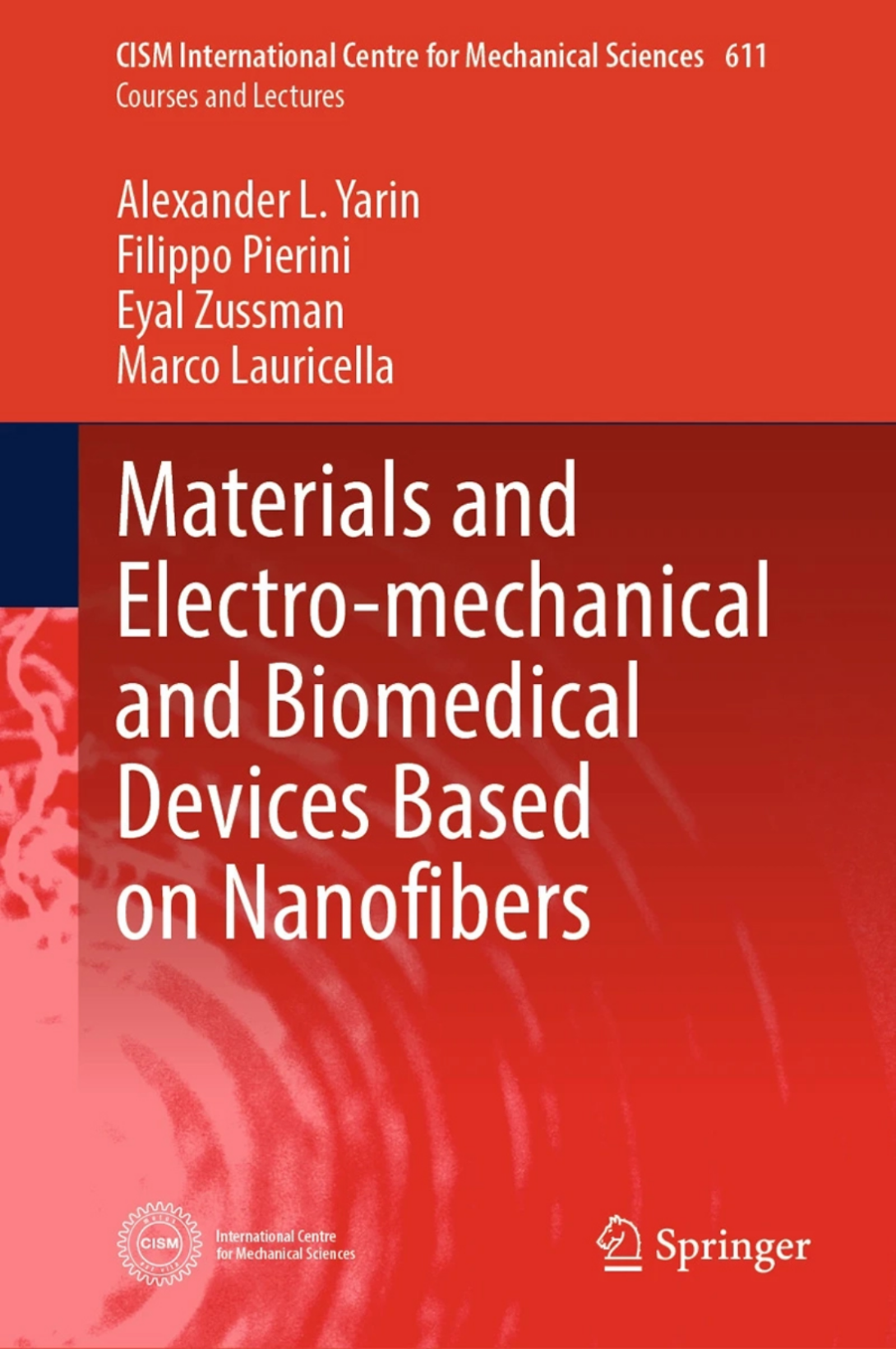
UIC Distinguished Professor Alexander Yarin has used his vast knowledge to provide a unique perspective in a new monograph called “Materials and Electro-mechanical and Biomedical Devices Based on Nanofibers.”
The book, which was co-written by Filippo Pierini, of the Institute of Fundamental Technological Research of Polish Academy of Sciences, Eyal Zussman, of the Israel Institute of Technology, and Marco Lauricella, of the Institute for Computing Applications of the Italian National Research Council, describes the main part of the ‘Materials and Electro-mechanical and Biomedical Devices Based on Nanofibers’ course given by the authors at the International Centre for Mechanical Sciences in July 2022 in Udine, Italy. It took two years to write and incorporates approximately 10 years of research published individually and collaboratively.
“Nanofiber-forming processes and the resulting fibers became a key element in many modern technologies,” said Yarin, who is the director of the Multiscale Mechanics and Nanotechnology Laboratory at UIC. “These processes require an in-depth understanding and a concerted interaction of synthetic chemistry responsible for polymers to be used as raw materials, polymer physics providing a link to their viscoelastic behavior, rheological characterization of mechanical properties, and non-Newtonian hydrodynamics of polymer solutions and melts.”
The writers address topics that are not found in other books, which includes fundamentals and modeling of fiber-forming processes like electrospinning and solution blowing of synthetic polymers and plant-derived biomaterials such as soy protein, zein, lignin, oats, sodium alginate and cellulose acetate, and such animal-derived biomaterials like silk protein, chitosan, bovine serum albumin, and fish sarcoplasmic protein.
“Some of these processes have already been demonstrated as a versatile, robust and industrially scalable approach to form monolithic and core-shell nanofibers from bio-waste,” said Yarin. “The core-shell fibers with healing agents in the core are key element for self-healing vascular composite materials used to sustain mechanical properties and for corrosion protection. Their mechanical characterization, an explanation of their action in the framework of the fracture mechanics, and demonstration of healing comprise an integral part of the book.”
In addition, the book covers application-oriented nanofibers such as self-healing vascular nanotextured materials, biopolymer nanofibers, soft robots and actuators based on nanofibers, biopolymer nanofiber-based triboelectric nanogenerators, metallized nanofibers, and heaters and sensors based on them.
The researchers discuss injectable nanofibrous biomaterials, fibrous hemostatic agents and their interaction with blood, as well as electrospun nanofibers for face-mask applications. They also detail polyelectrolytes-based complex nanofibers and their use as actuators, and cover drug release facilitated by polyelectrolytes-based complex nanofibers.
Professor Yarin hosts successful nanofiber workshop at International Centre for Mechanical Sciences in Italy 2024
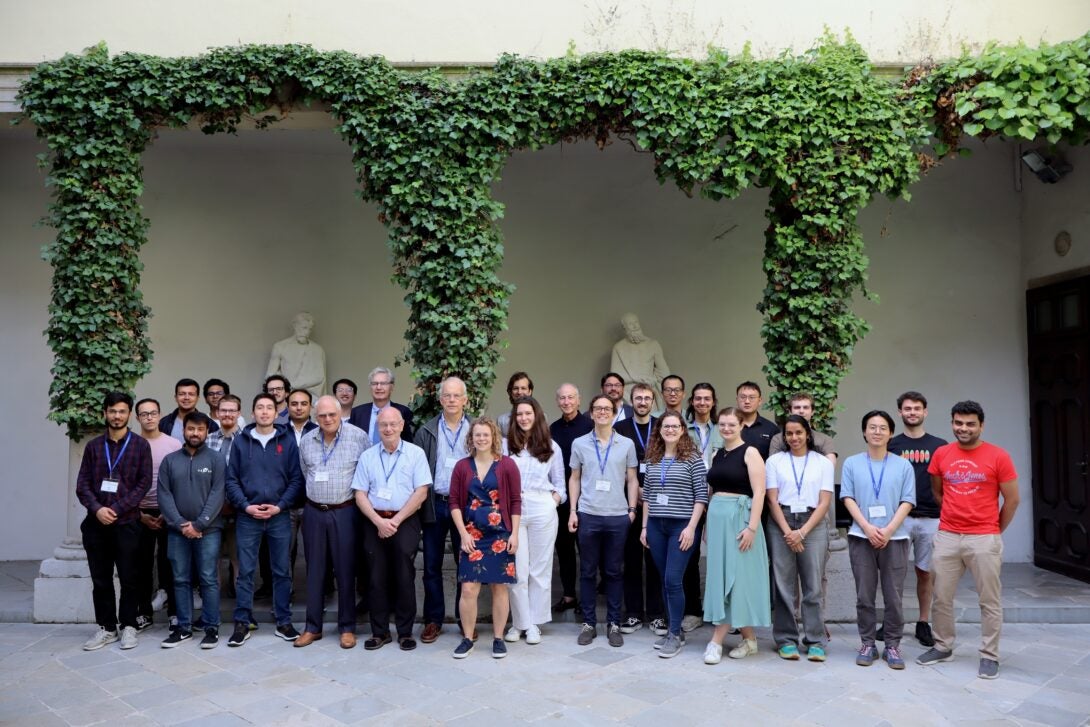
Mechanical and Industrial Engineering Distinguished Professor Alexander Yarin recently co-hosted the five-day workshop “Materials, Electromechanical and Biomedical Devices based on Nanofibers” at the prestigious International Centre for Mechanical Sciences (CISM) in Udine, Italy, 2024.
Drops, Jets and Films – their generation, stability, mutual interaction, interaction with their surroundings, as well as their associated transport phenomena with the ambient play a vital role in all aspects of our lives, countless industrial processes and indeed, constitute the natural lifeline not only of humans, but also of all living matter. Research abounds in all of the above-mentioned aspects and the aim of the proposed course is to fill this educational gap specifically for researchers in this domain; hence, the course addresses researchers at the graduate and post-graduate level. Typically, these researchers are coming from the disciplines of engineering, physics, mechanics, mathematics or chemistry, but it is not unlikely that also other natural sciences may be relevant, e.g., biology, medicine, and even forensics.
Research on drops, jets and films has a rich theoretical history, a somewhat younger experimental history and in recent times an indispensable anchor in numerical simulations, with its multitude of computational approaches. The lecturers of the proposed course have been selected to mirror this diverse set of methodologies. A further aim of the course is therefore to demonstrate the strengths and limitations of each method and to underline their complementarity. The course is particularly timely for a multitude of reasons, perhaps the most important being urgency. The COVID pandemic is just one example of how the interaction of aerosols with their environment reaches into all aspects of life, up to the societal-political level. However of equal if not stronger importance is the enormous economic impact that drops, jets and films have on our industrial world or on health issues, be it combustion, capillary flows, evaporation, coating, painting, liquid deposition, etc.
Alumni Spotlight: New company aims for early cancer detection

The early diagnosis of cancer offers the best chance for successful treatment. When cancer care is delayed or inaccessible, there is a lower chance of survival, an increase of problems related to treatment, and higher costs of care.
To help those with cancer, Srikar Raman, who earned his PhD in mechanical engineering from UIC in 2010, launched the healthcare company Tvaster Genkalp in 2021.
“We have invented a technology to detect liver cancer at an early stage using epigenetics, and we have filed for a patent as well,” said Raman, the co-founder and CEO of the India-based company. “We are in the field of cancer diagnostics. We are involved in mostly genetics and epigenetics, which is for molecular diagnostics.”
Tvaster Genkalp offers molecular diagnostic solutions for cancer by focusing on the identification of genetic and epigenetic modifications, enabling oncologists to make informed decisions.
“The best way to address cancer is with efficient diagnostic methods through which you can detect it at a relatively earlier stage than what it is being done now,” Raman said.
Before launching his own company, Raman gained a passion for research as a PhD student working under the direction of UIC Distinguished Professor Alexander Yarin in the Multiscale Mechanics and Nanotechnology Laboratory at UIC.
As Yarin’s first PhD student at UIC, Raman was researching nanofibers related to biomedical applications and the release of drugs through nanofibers.
“Professor Yarin, the way he thinks is absolutely amazing. It was a wonderful experience working in his lab and I learned a lot from him. He instilled in me the interest to do research. I always tell him that I wouldn’t have gone into research without him,” he said
While Raman has been away from UIC for nearly 15 years, he still thinks about Yarin and how he can potentially work with him again.
He believes that his company’s strength in the applied part of the research and Yarin’s strength in theory will advance science in both fields.
“I want to collaborate with Professor Yarin in some way or another. Once I have something more substantial, I will approach him and he can theorize some mathematical equations that he will just pull out of thin air and then make a theory out of it,” he joked.
Blood from gunshot wounds does not always land on the killer, scientists find
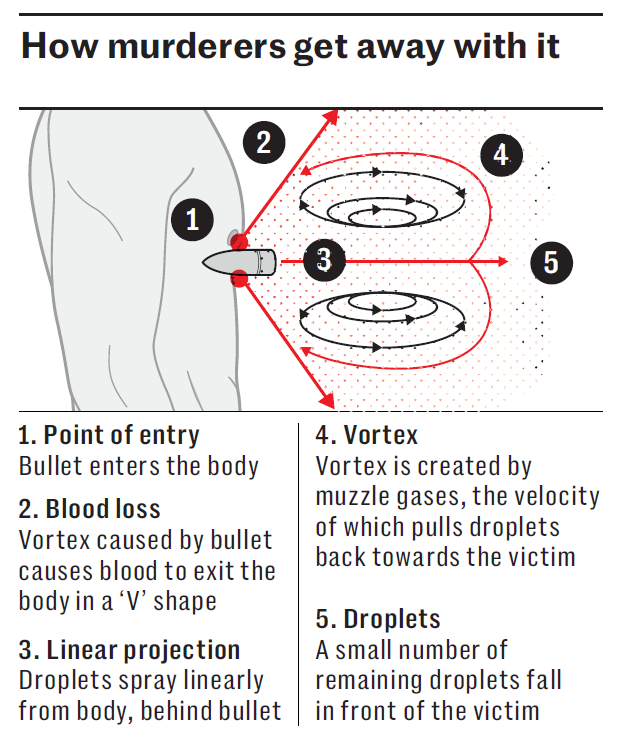
GETTING away with murder just became harder after scientists discovered that blood from gunshot wounds does not always land on the killer.
Experts found that when bullets are fired they create a spinning column of air and propellant gases between the victim and shooter, which can pull blood splatter backwards towards the target. It means that a killer standing near a victim may barely get splashed with blood at all, as the initial impact forces the spatter out in a cone-shaped mist – either side of the shooter – while the vortex effect sucks an central particles back the way they came.
The team of US researchers said it could explain how Phil Spector, the American music producer, managed to stay relatively clean of blood stains after murdering Lana Clarkson by firing a revolver in her mouth in 2003. Spector had 18 tiny drops of blood on his jacket, and his defense team claimed there should have been more if he had been in close proximity to the actress when she died. Although he was convicted of the killing, the first trial ended with a hung jury in part because forensic experts could not agree how to interpret the blood spatter evidence.
The team is now planning to study whether the spatter of brain tissue may also follow similar patterns, which could help determine whether a person killed themselves, or been murdered. The research was published in Physics of Fluid.
Improving Bloodstain Pattern Analysis with Fluid Dynamics
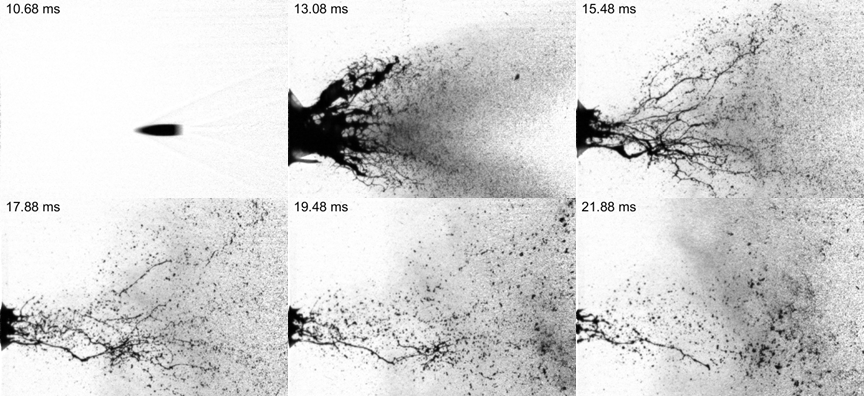
WASHINGTON, April 25, 2023 – Often left on the surfaces of a crime scene or on the clothes of an accused criminal, blood back spatter can be used as evidence for forensic scientists to reconstruct what occurred. However, the fluid dynamics at play are complicated, and neglecting the interaction between the blood and the muzzle gases from the firearm could skew the results.
In Physics of Fluids, by AIP Publishing, researchers from the University of Illinois Chicago and Iowa State University modeled the behavior of blood drops during secondary atomization to examine how the phenomenon affects a crime scene.
“Primary atomization of blood is caused by a gunshot (bullet). It results in multiple drops spattered in the air,” said author Alexander Yarin. “Some of these drops are big enough to be significantly distorted and torn apart by the air drag forces acting on a drop in flight. Smaller droplets arise during this process, which is called secondary atomization.”
The team examined different starting droplet sizes and confirmed their model with experiments. They found the effect of secondary atomization was significant and predictable: The smaller droplets were easier to sweep up by the firearm’s gases and turn around toward the victim.
“Muzzle gases form a turbulent vortex ring which moves toward a victim from a shooter and pushes the blood droplets from the shooter back to the victim,” said Yarin. “Droplets are also deflected aside, and our predictions showed that some can even land behind the victim, even though initially they were moving from the victim toward the shooter.”
This discovery could explain how a short-range shooter might stay clean from blood stains, like in the famous case of Phil Spector presumably murdering Lina Clarkson while keeping his outfit practically clean.
“The results reveal the usefulness of multiphase flow fluid mechanics for the forensic discipline of back spatter analysis,” said Yarin. “Hopefully, code based on the present results would be used in future crime scene investigations.”
In the future, the group is interested in studying the spatter of brain tissue in similar short-range shooting events. They believe such work could help distinguish between a suicide and a staged homicide.
Scilight: Cleaning and cooling teeth while preventing COVID-19 cross-infection

Polymer solutions can stop contaminated liquids from aerosolizing during common dental procedures.
The authors found that solutions containing polyacrylic acid, polyethylene glycol, or polyvinylpyrrolidone can efficiently clean and cool teeth to dental standards when they are used as irrigating fluids in dental procedures like cavitron scaling. These polymer solutions also prevent aerosolization due to their high elongational viscosity, and they remain pumpable. Less aerosols are produced as polymer concentration in such a viscoelastic solution increases, and complete aerosolization suppression is possible.
Visit of Dr. Minwook Lee (Senior Researcher at Korea Institute of Science and Technology (KIST) )

Dr. Minwook Lee, graduated from Dr. Yarin’s lab, visited back to the lab and took photos with Dr. Yarin and current PhD students. He is now working at Korea Institute of Science and Technology (KIST) Institute of Advanced Materials as Senior Researcher.
Professor Yarin hosts successful nanofiber workshop at International Centre for Mechanical Sciences in Italy
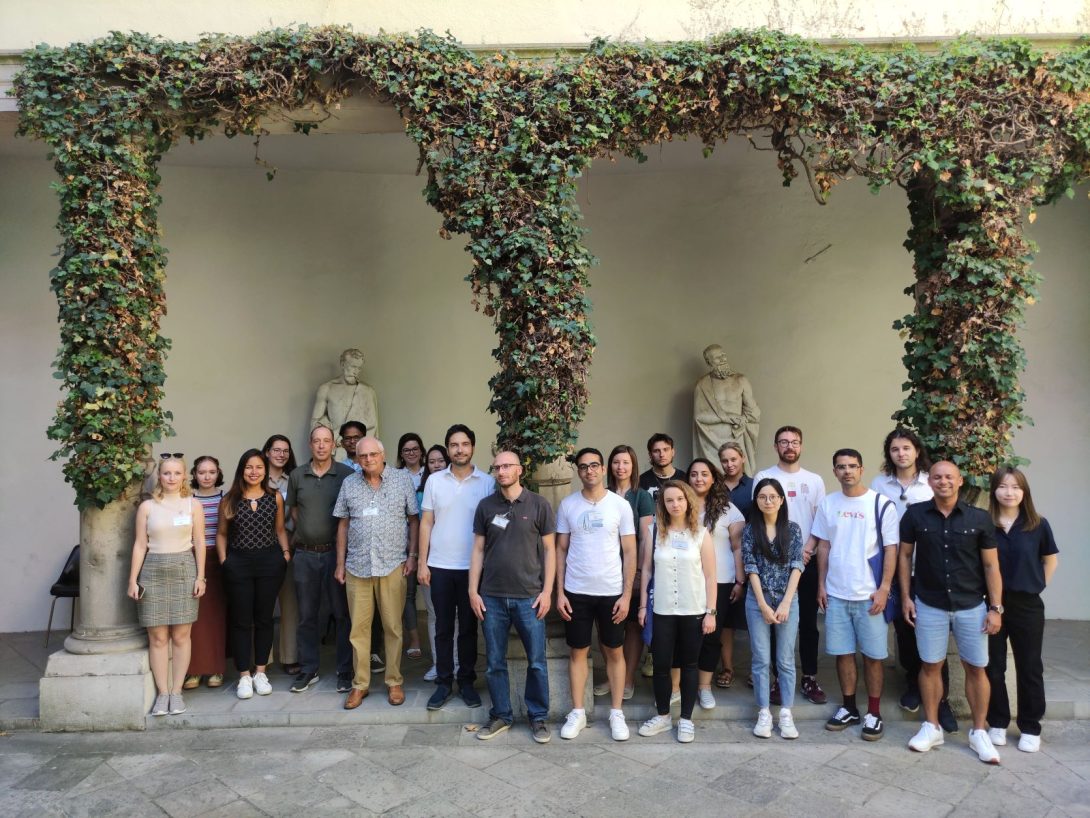
Mechanical and Industrial Engineering Distinguished Professor Alexander Yarin recently co-hosted the five-day workshop “Materials, Electromechanical and Biomedical Devices based on Nanofibers” at the prestigious International Centre for Mechanical Sciences (CISM) in Udine, Italy.
The CISM has helped organize workshops on different topics related to mechanical engineering and applied physics for 50 years, and it is highly competitive to have a proposal for a workshop accepted by the organization.
The event, which was co-hosted by Polish Academy of Sciences Professor Thomasz Kowalewski, was geared toward undergraduate seniors, graduate students, researchers, young professors, engineers, and practitioners in industry interested in inter-related topics from materials science, biomedical, chemical and mechanical engineering, manufacturing, and applied mathematics.
“The course can be of special importance to those interested in developing novel devices and models employing nanofibers based on in-depth and comprehensive exposition of physical foundations of such devices and related phenomena,” Yarin said.
Nanofiber-forming processes and the resulting fibers are a key element in many modern technologies. These processes require in-depth understanding and concerted interaction of synthetic chemistry responsible for polymers to be used as raw material, polymer physics providing a link to their viscoelastic behavior, rheological characterization of mechanical properties, and non-Newtonian hydrodynamics of polymer solutions and melts.
Eight UIC students participated in the workshop, which included PhD students and young researchers from the United States, Israel, UK, Italy, Poland, Croatia, Slovenia, Saudi Arabia, Turkey, and Brazil.
“The attendees and the CISM Secretary General Professor Antonio DeSimone found the workshop to be successful, useful, and interesting,” Yarin said. “There were a lot of informal exchanges and networking opportunities, which will lead to future research collaboration on an international level.”
Invited contributions from early career researchers 2020 at Physics of Fluids.
Patrick Comiskey and Christopher Staszel are mentioned in a special issue of Physics of Fluids which is dedicated to outstanding
young scientists who are at the early stages of their “scientific life.”
Solving a murder case with physics
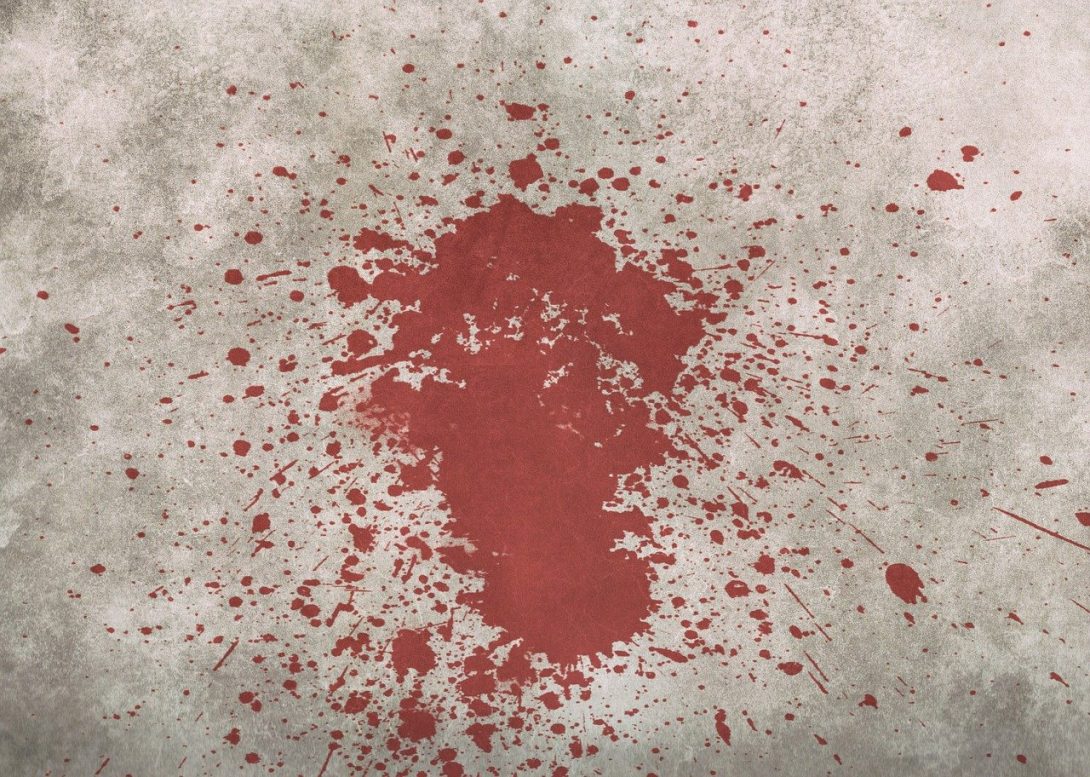
In 2009, famed music producer Phil Spector was found guilty of the murder of actress Lana Clarkson, who was found dead from a single gunshot to her mouth at close range in Spector’s California mansion.
During the trial, the attorney argued that Spector couldn’t have been the shooter because his white dinner jacket only had a handful blood droplets on it. If he shot Clarkson, the jacket would be covered with blood.
After watching a film about the trial, UIC Distinguished Professor Alexander Yarin was intrigued by the scientific questions it raised. Yarin and his colleagues from Iowa State University—Assistant Professor James Michael and Associate Professor Daniel Attinger— started researching blood spatter, and their recent papers show how Spector could be the shooter and remain relatively free of blood droplets.
“We did simulations with my PhD student Gen Li and found that there are scenarios where droplets can be turned around completely and land behind the victim. Experiments of Dr. Michael confirmed that prediction.”
In addition, the researchers noted that a shooter could stand in a certain position or at a specific angle and all backward blood spatter would be turned around, keeping the shooter clean.
“Essentially, I believe this proves that a shooter could have been guilty. There is an explanation for how his outfit could have been basically clean. And the explanation is essentially physically sound,” Yarin said.
The researchers plan to continue investigating the blood spatter as they examine a variety of interesting situations and variables.
“We want to go much further,” he said. “You have the effect of skin, which may not be that significant, but the effect of surrounding bones can be very significant,” he said. A cranial wound, Yarin noted as an example, does not result in an immediate spatter; it is delayed.
“There’s a lot of interest in the phenomena associated with these types of wounds,” Yarin said. “We would like to study them and understand them better because there might be several waves of gushes of blood and brain matter from such wounds.”
Those results have been published on Physics of Fluids as Featured Article, read more with following link:
Forensics puzzle cracked via fluid mechanical principles
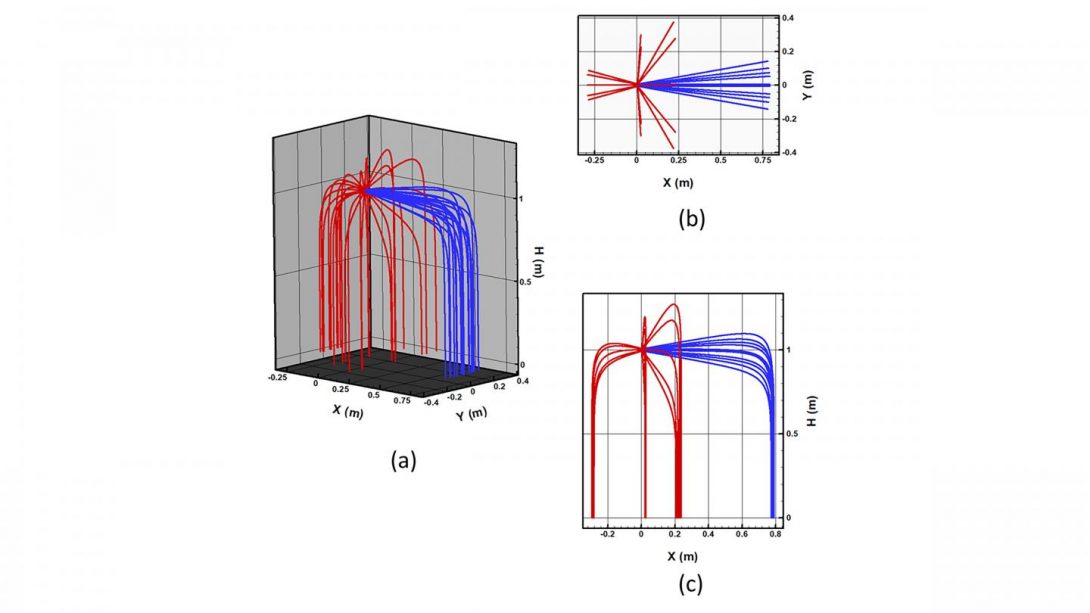
In Physics of Fluids, from AIP Publishing, the researchers present theoretical results revealing an interaction of the incoming vortex ring of propellant muzzle gases with backward blood spatter.
A detailed analytical theory of such turbulent self-similar vortex rings was given by this group in earlier work and is linked mathematically to the theory of quantum oscillators.
“In our previous work, we determined the physical mechanism of backward spatter as an inevitable instability triggered by acceleration of a denser fluid, blood, toward a lighter fluid, air,” said Alexander Yarin, a distinguished professor at the University of Illinois at Chicago. “This is the so-called Rayleigh-Taylor instability, which is responsible for water dripping from a ceiling.”
Backward spatter droplets fly from the victim toward the shooter after being splashed by a penetrating bullet. So the researchers zeroed in on how these blood droplets interact with a turbulent vortex ring of muzzle gases moving from the shooter toward the victim.
They predict that backward blood spatter droplets can be entrained — incorporated and swept along within its flow — by the approaching turbulent vortex ring, even being turned around.
“This means that such droplets can even land behind the victim, along with the forward splatter being caused by a penetrated bullet,” said Yarin. “With a certain position of the shooter relative to the victim, it is possible for the shooter’s clothing to remain practically free of bloodstains.”
Who pulled the trigger? Gun muzzle exhaust may complicate analysis of crime scenes
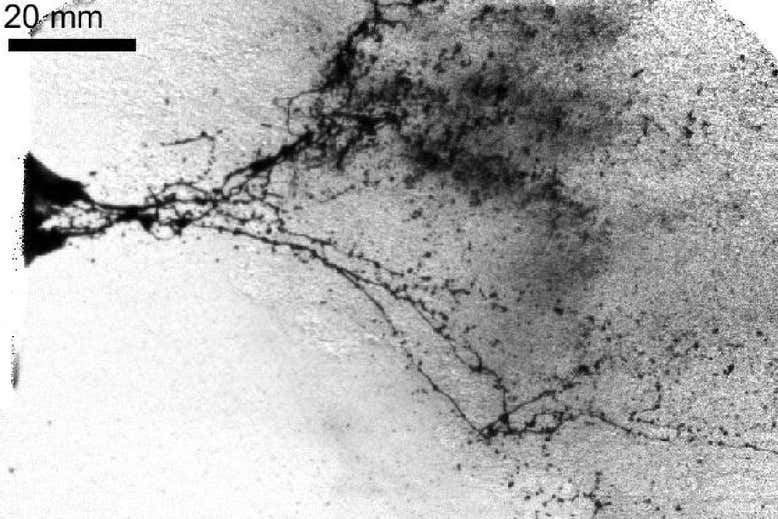
When a gun is fired, the gases that propel the bullet forward also issue forth from the barrel at high speed, forming turbulent vortex rings. As blood droplets coming from the victim encounter a vortex going in the opposite direction, they can get swept aside or along by the gas flow. They may even end up completely reversing direction, Yarin and colleagues report today in Physics of Fluids.
Can dental scalers, drills be used without spraying aerosols?
Adding a polymer to a dental office’s water system can completely eliminate aerosols generated by ultrasonic scalers and drills, reducing the transmission risk of pathogens such as SARS-CoV-2, according to a study published online August 25 in Physics of Fluids.
Adding polyacrylic acid to a dental office’s irrigation system changes the way water responds; the water and polymer solution forms strands that remain near the tips of dental tools, preventing droplets from entering the air, according to the authors.
Reopening dentistry after COVID-19: Complete suppression of aerosolization in dental procedures by viscoelastic Medusa Gorgo Reported in German

Physiker der Universität Illinois Chicago verfolgen einen ganz neuen Ansatz, um die Gefahr einer möglichen Infektion mit SARS-CoV-2 bei einer zahnärztlichen Behandlung zu reduzieren: Sie wollen die Spraynebelbildung komplett verhindern.
Reopening Dentistry With Complete Aerosol Suppression
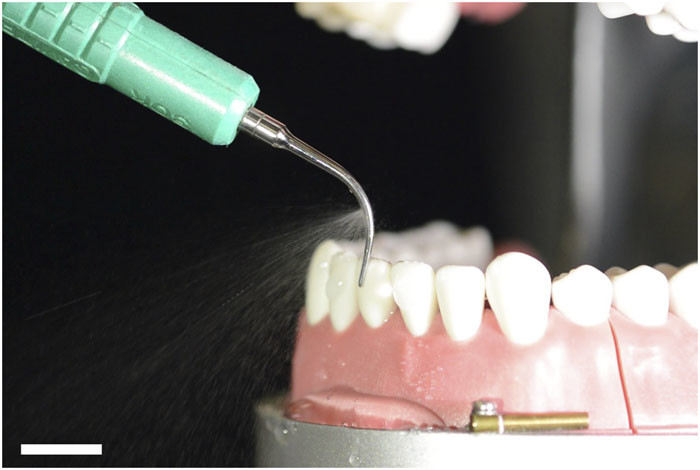
Ever since the onset of the COVID-19 pandemic, the potential for transmission of virus particles through aerosol generation has had a significant impact on the delivery of dental procedures and created a heightened risk for the dental team.
For months, it seemed the problem of aerosol production in dental offices was insurmountable. That is until a team of researchers, led by Dr. Alexander Yarin, Professor at the Department of Mechanical and Industrial Engineering at the University of Illinois at Chicago, came up with a novel approach that alters the physical response of water to the rotary and ultrasonic forces that are used in dentistry.
In this breakthrough discussion with Chiraz Guessaier, Manager of CDA Oasis, Dr. Yarin presents his ground-breaking findings that may eliminate the risks posed by aerosol generation entirely. He explains the concept of risk elasticity and walks through clear video evidence of aerosol suppression. He also suggests it may not be long before this breakthrough technology finds its way into dental offices all over the world.
Polymers in water at dentist can prevent aerosol mists that spread germs
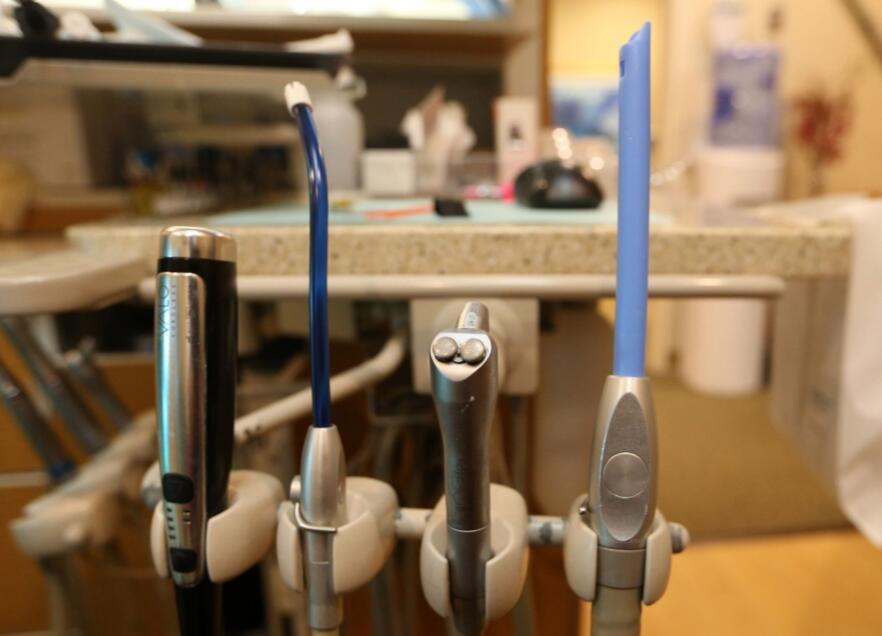
Researchers say the addition of food-grade polymers to water solutions, such as polyacrylic acid, can prevent misting.
In lab experiments, small amounts of polyacrylic acid eliminated aerosolization entirely, they say.
“It was amazing that these materials were capable of so easily and completely suppressing aerosolization by dental tools, with significant inertial forces involved. Nevertheless, the elastic forces generated by small polymer additives were stronger,” said Yarin, a professor of mechanical and industrial engineering at the University of Illinois.
Food-additive might make pandemic dental visits safer
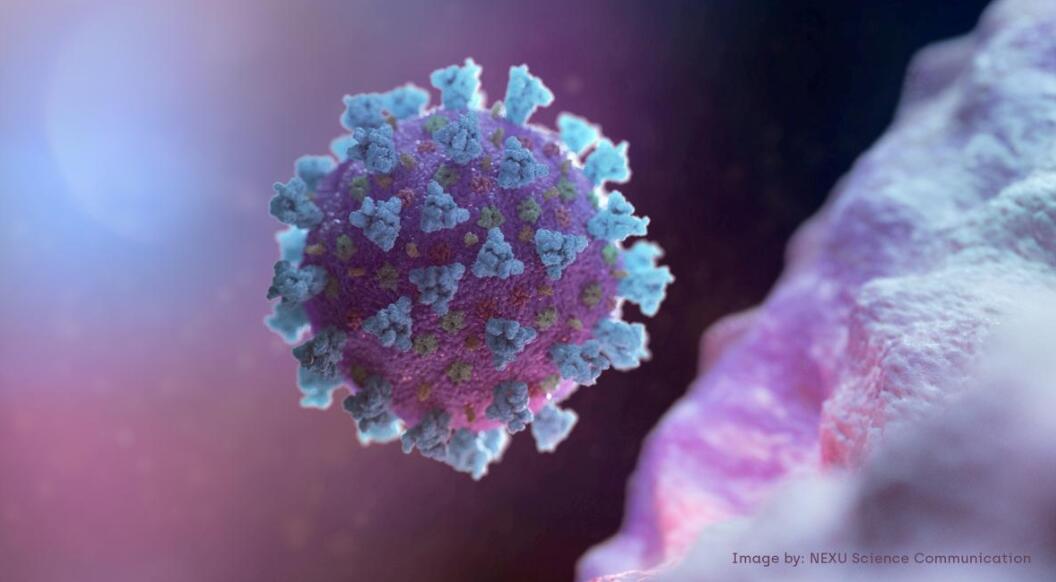
Scientists may have a solution to a hazard faced by dentists and their patients during the coronavirus pandemic. The mists generated by water used in dentists’ tools could potentially carry exhaled coronavirus particles through the air. Mixing the water with a small amount of an FDA-approved food additive called polyacrylic acid can markedly suppress these mists or even prevent them, researchers reported on Tuesday in the journal Physics of Fluid. “What was surprising is that the very first experiment in my lab completely proved the concept,” coauthor Alexander Yarin of the University of Illinois at Chicago said in a news release. “It was amazing that these materials were capable of so easily and completely suppressing aerosolization by dental tools.” The spraying mist results when water encounters rapid vibration of a dental tool or the centrifugal force of a drill, which bursts water into tiny droplets and propels them into the air, the researchers explain. The polymer suppresses these bursts as large polymer molecules stretch like rubber bands, pulling the droplets back and preventing them from becoming airborne.
Polymers Prevent Potentially Hazardous Mist During Dentist Visit
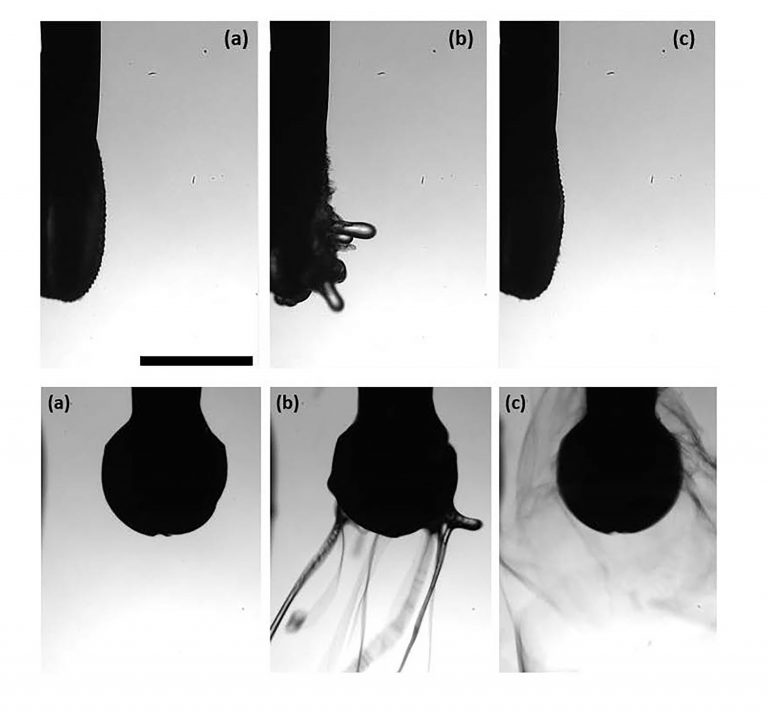
Researchers at the University of Illinois at Chicago couldn’t stop thinking about the spinning, vibrating tools in a dentist’s office that turn water into mist and send it flying into the air. If that mist contains a virus or some other pathogen, it is a health hazard for dentists and patients.
In a paper published this week in Physics of Fluids, by AIP Publishing, Alexander Yarin and his colleagues discovered that the forces of a vibrating tool or dentist’s drill are no match for the viscoelastic properties of food-grade polymers, such as polyacrylic acid, which they used as a small admixture to water in dental settings.
Engineering breakthrough can mitigate COVID-19 contamination in dental clinics
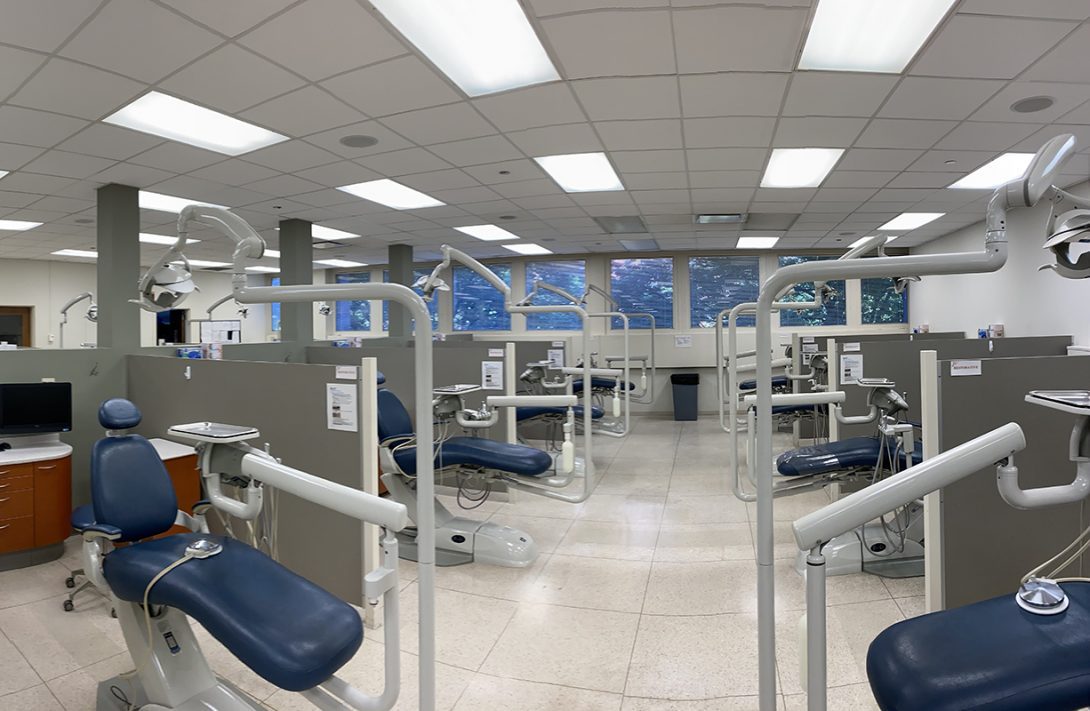
Dental practices have been shuttered since March after being cautioned by the American Dental Association and the Centers for Disease Control and Prevention to close their offices to all but emergencies. Recently, they provided a framework for reopening facilities, which calls for offices to carry extra personal protective equipment (PPE) like face masks, shields, eye protection, gowns and gloves, and to change them frequently. The guidelines call for the complete cleaning of workspaces between patients and a pause to allow air filtration systems to remove potentially infectious particles.
UIC’s College of Dentistry is following the guidelines to protect patients, faculty, staff and students against COVID-19. However, these measures do not guarantee complete protection against the inhalation of aerosols generated by some of the essential tools used by dentists.
To mitigate the aerosols, the dental school leaders reached out to experts at the UIC College of Engineering to help them solve the problem.
UIC’s engineering team, made up of faculty and students from Mechanical and Industrial engineering (MIE) and Electrical and Computer Engineering (ECE), are studying how aerosols are dispersed from dental instruments.
With the polymer solution, threads and filaments do not break up and droplets do not detach, as demonstrated in the lab experiments and in the dental clinic. Yarin and his PhD students tested the solutions at low speeds and at the highest speed of the dental drill and all Cavitron powers, which provided the same suppression of droplet formation.
PhD students Yasmin Dias, Jevon Plog and Jingwei Wu worked under the direction of Yarin on this research. “These three students were very instrumental and heroically came to UIC when everything was closed, and we worked alone there for quite some time,” Yarin said.
UIC is now filing a patent for this new technology and working with companies to get the process implemented, which will allow dental schools and clinics to reopen and operate safely. Their research will be published as a feature article in the journal Physics of Fluids under the title “Reopening Dentistry after COVID-19: Complete Suppression of Aerosolization in Dental Procedures by Viscoelastic Medusa Gorgo.”
Professor Yarin uses plants to research fighting forest fires

Forest fires cause tremendous trouble as they threaten lives, homes, communities, and destroy millions of acres of land annually, leaving billions of dollars of damage in their wake.
While firefighters use a wide range of tactics to combat the fires, recent research conducted by UIC Distinguished Professor Alexander Yarin and his team in the Multiscale Mechanics and Nanotechnology Laboratory at UIC shows how some plants can help to understand the intrinsic mechanism of forest fires. Professor Eyal Zussman, of the Technion – Israel Institute of Technology, and PhD student Wenshuo Zhang collaborated on the research.
The results of their research were published in the journal Experimental Thermal and Fluid Science under the title “Heat and mass transfer resulting in eruptive jetting from stems and leaves during distillation stage of forest fire.”
Researchers are revolutionizing battery industry with novel approach to produce solid ceramic batteries
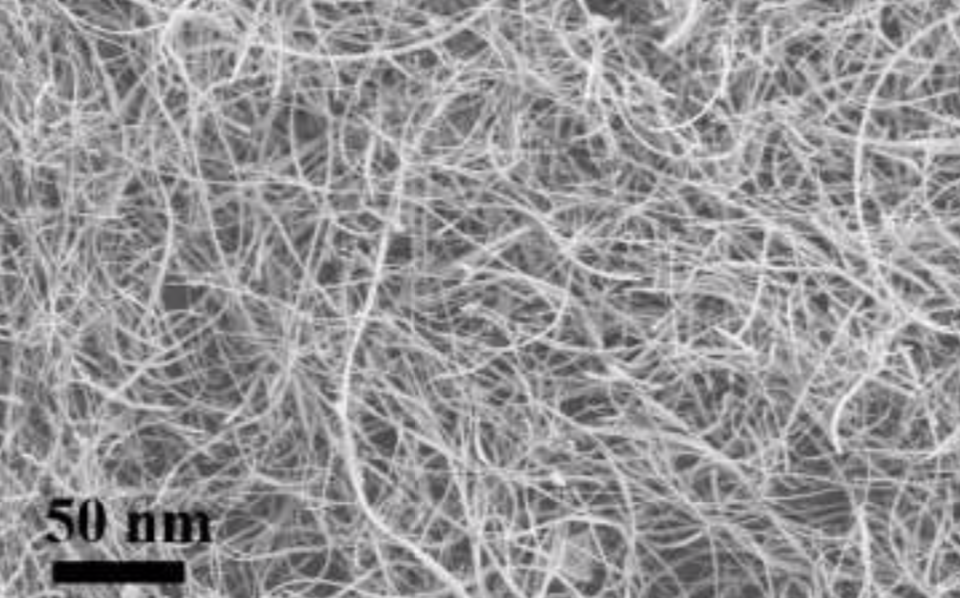
Approximately 17 million cars and light trucks were purchased in 2019, and all of those vehicles have batteries. Every battery takes time to manufacture and a new technique may make batteries safer, while reducing costs and processing time.
Professors Reza Shahbazian-Yassar and Alexander Yarin, both of the Mechanical and Industrial Engineering Department at the University of Illinois Chicago, and their students recently had a research paper titled “Solution Blowing Synthesis of Li-Conductive Ceramic Nanofibers” in the journal ACS Applied Materials and Interfaces.
IIT-Mandi develops high-efficiency face masks from waste plastic bottles
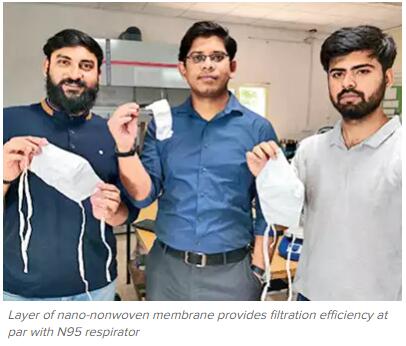
IIT’s School of Engineering assistant professor Dr Sumit Sinha Ray, along with research scholars Ashish Kakoria and Sheshang Singh Chandel, used waste plastic bottles to develop a single thin layer of nano-nonwoven membrane that provides desirable particle filtration efficiency at par with N95 respirator and a medical mask.
“The nono-fibres can do wonders for face masks. Air-borne particulate and pollutant removal efficiency and breathability are two main criteria for an
efficient face mask. The commercially available melt blown fabric-based masks can be efficient at a cost of high-breathing resistance, while generic 3-ply surgical masks are breathable but have meagre efficiency. But, nano-fibresbased masks can filter out small particles efficiently despite being comfortably breathable,” Dr Sumit Sinha Ray said.
Calling the shots
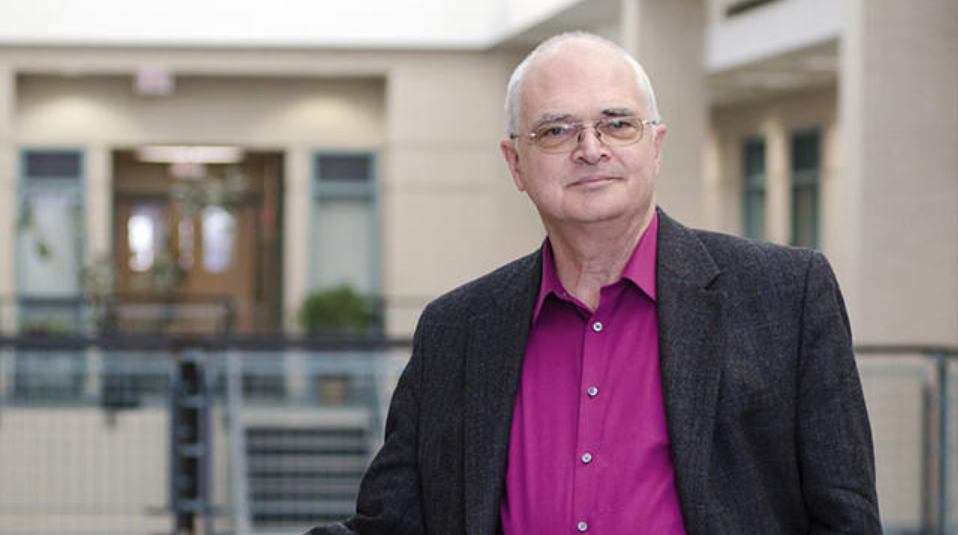
Blood spatter can provide a lot of information to an investigator at a crime scene. Unfortunately, current methods do not tell the whole story. UIC Distinguished Professor Alexander Yarin and his colleagues have shown that investigators can gather more accurate information. Their blood spatter research has the potential to change crime scene investigations in the same way DNA changed other police investigations.
Yarin and his associates made a splash in the science and law enforcement communities with their research on blood spatter with their papers, Prediction of Blood Backspatter from a Gunshot in Bloodstain Pattern Analysis, which was published in the journal Physical Review Fluids in 2016, High-Speed Video Analysis of Forward and Backward Spattered Blood Droplets published in Forensic Science International in 2017, and Hydrodynamics of back spatter by blunt bullet gunshot with a link to bloodstain pattern analysis, published in Physical Review Fluids in 2017.
Flying high
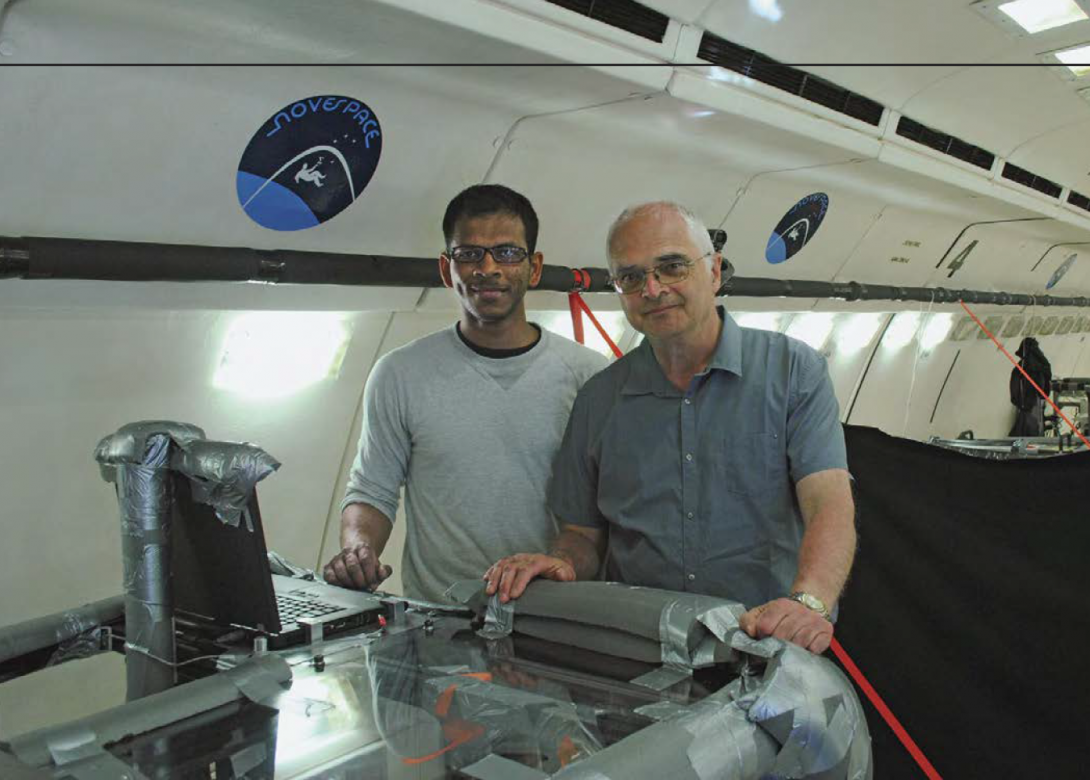
Suman Sinha Ray, a postdoctoral fellow and recent UIC graduate, and his brother, Sumit Sinha Ray, a graduate student, conducted experiments in 2013 in a Novespace & European Space Agency plane while floating weightless. Under the direction of Alexander Yarin, UIC professor of mechanical and industrial engineering, the brothers went aloft and braved high- and zero-gravity to test a cooling system Yarin’s team developed for hot-running microelectronics.
Satellites, rockets, and drones have elaborate electro-optical and infrared sensors, recording equipment, and data processing systems that generate heat and can burn out. Yarin and his group have developed novel nano-textured surfaces that dramatically increase cooling efficiency. They were interested in learning how well the evaporative cooling system they developed would work under conditions of twice-normal or zero gravity. The three flights were physically demanding but “exciting and fun,” said Suman, who worked on the computer running the experiment. Sumit photographed the action and monitored the pressurized rigging running the system.The research was sponsored by NASA and in collaboration with a Germanuniversity.